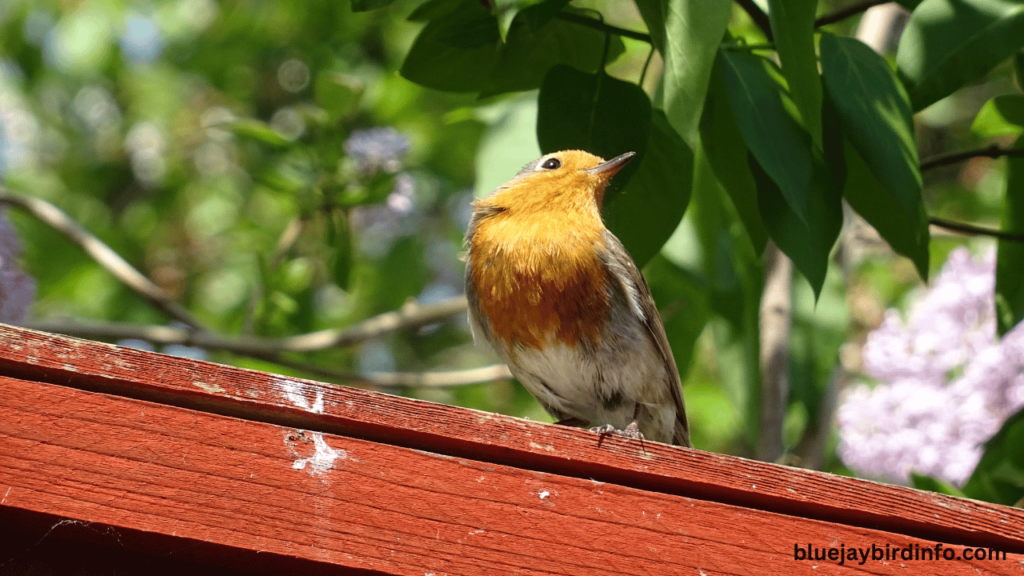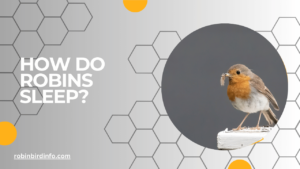We all know the delightful sight: a Robin perched on a branch, its vibrant red breast a splash of color against the morning sky. But what happens when the sun sets and the shadows lengthen?
Where do these familiar songbirds go to rest their weary wings?
Unlike owls with their piercing night vision, Robins are not known for their nocturnal activities. Their days are filled with a flurry of activity – searching for insects, singing their cheerful melodies, and defending their territory.
But as darkness falls, they transition into a state of reduced activity, seeking a safe and sheltered spot to catch some sleep.
This blog post delves into the fascinating world of Robin slumber. We’ll explore the various locations Robins choose for their nighttime roosts, the factors influencing their decisions, and the surprising benefits of group roosting.
So, keep reading and discover the hidden world of Robin sleep – a secret slumber party happening right in your own backyard (or local park)!
Contents
- 1 Roosting Behavior
- 2 Types of Roost Sites
- 3 Community Roosting
- 4 The Impact of Environmental Factors
- 5 Conservation Implications
- 6 Conclusion
- 7 FAQ’s
- 7.0.1 Where do Robins typically roost at night?
- 7.0.2 Do Robins roost alone or in groups?
- 7.0.3 How long do Robins typically roost at night?
- 7.0.4 Do Robins migrate to warmer climates for the winter?
- 7.0.5 How can I attract Robins to my yard?
- 7.0.6 What threats do Robins face during their nighttime roosting?
Roosting Behavior
As the sun dips below the horizon, Robins transition from their busy daytime routines to a state of reduced activity. Nocturnal behavior for Robins primarily involves roosting, a period of rest and energy conservation.
The choice of a roost site is crucial for a Robin’s survival.
They seek out locations that offer protection from predators, adverse weather conditions, and energy efficiency. Factors such as the availability of food sources, proximity to water, and the presence of suitable vegetation influence their decision-making.
Types of Roost Sites
Trees are a common choice for Robin roosting sites.
They offer shelter from wind, rain, and predators. Robins often select specific tree species, such as conifers or deciduous trees with dense foliage. Within the tree, they may choose to roost on branches, in cavities, or in dense foliage.
Shrubs can also provide suitable roosting sites, especially during colder months. Dense shrubs offer protection from wind and cold temperatures. Robins may roost on the branches of shrubs or within their protective foliage.
In urban areas, man-made structures such as buildings and bridges can serve as roosting sites. Robins may roost on ledges, window sills, or under eaves. However, it’s important to note that these artificial structures may not always offer the same level of protection as natural habitats.
Community Roosting
Many bird species, including Robins, engage in communal roosting. This behavior involves large numbers of birds gathering at a specific location to roost together.
Social dynamics play a role in communal roosting. Birds may form hierarchies within the roost, with dominant individuals securing the best roosting spots. Communal roosting can provide several benefits, including increased warmth, reduced predation risk, and enhanced social interactions.
By roosting in large groups, Robins can collectively deter predators through increased vigilance and coordinated defense mechanisms. Additionally, group roosting can help regulate body temperature, especially during cold nights.
The Impact of Environmental Factors
Weather conditions significantly influence Robin roosting behavior. During cold, windy nights, Robins may seek shelter in dense foliage or sheltered cavities. In wet conditions, they may choose higher perches to avoid waterlogged areas.
Food availability also plays a role in roosting site selection. Robins may choose to roost closer to food sources to minimize energy expenditure during the night.
Human disturbance can disrupt Robin roosting behavior. Noise, light pollution, and human activity can disturb roosting birds, leading to increased stress and reduced sleep quality.
Conservation Implications

The loss of natural habitats, such as forests and woodlands, can negatively impact Robin roosting sites. Habitat loss can reduce the availability of suitable trees and shrubs for roosting, forcing Robins to seek alternative, less ideal locations.
Climate change can also affect Robin roosting behavior. Changes in temperature and precipitation patterns may alter the timing of migration and the availability of food resources, which can impact roosting site selection.
Conclusion
To protect Robin roosting sites and promote conservation, it is important to minimize human disturbance, maintain healthy ecosystems, and support initiatives that protect bird habitats.
By understanding the factors that influence Robin roosting behavior, we can take steps to ensure the well-being of these fascinating birds.
FAQ’s
Where do Robins typically roost at night?
Robins often roost in trees, shrubs, or dense vegetation. They may also use man-made structures like buildings or bridges.
Do Robins roost alone or in groups?
Robins can roost both alone and in groups. Communal roosting can provide warmth and protection from predators.
How long do Robins typically roost at night?
Robins usually roost for several hours during the night, typically from dusk until dawn.
Do Robins migrate to warmer climates for the winter?
Some Robin populations migrate south for the winter, while others remain in their breeding territories year-round.
How can I attract Robins to my yard?
To attract Robins to your yard, provide a variety of food sources, such as birdseed, mealworms, and fresh fruit. You can also create a bird-friendly environment by planting native plants, offering clean water sources, and providing nesting sites.
What threats do Robins face during their nighttime roosting?
Robins face various threats during their nighttime roosting, including predation from cats, owls, and other predators. Additionally, extreme weather conditions, such as severe cold or storms, can pose risks to roosting birds.








